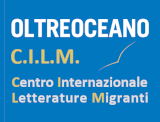Archivio
-
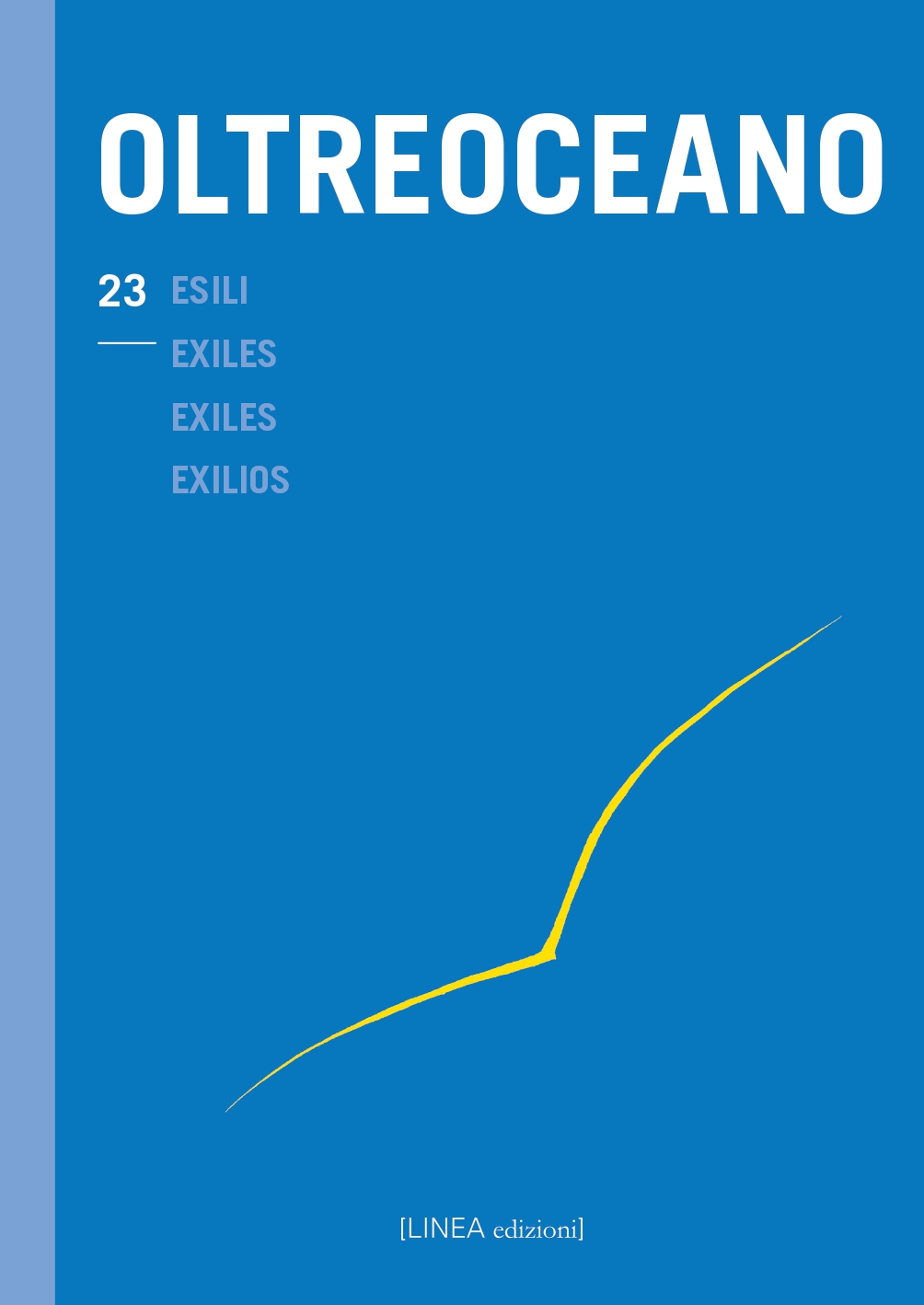
Esili
N. 23 (2025)La nozione di esilio è indissolubilmente legata all’idea di separazione e rottura: il numero si focalizza sulla rappresentazione dell’esilio inteso in senso lato, sia esilio fisico come displacement con la conseguente perdita di lingua e radici, che esilio simbolico legato ad un vuoto identitario da cui ha origine una ricerca esistenziale. Nei saggi sono state prese in considerazione opere di autori ed autrici migranti esaminati dal punto di vista letterario e culturale all’interno di tre spazi linguistici, l’anglofono, il francofono e l’ispanofono, soprattutto nel continente americano, da Stati Uniti a Canada all’America del Sud, ma con delle puntate nell’Africa subsahariana e in Europa, terra di accoglienza quest’ultima di molti intellettuali provenienti da diversi orizzonti geografici. Apre il numero un’intervista a Siegfried Gerhardt, esule dalla DDR.
-
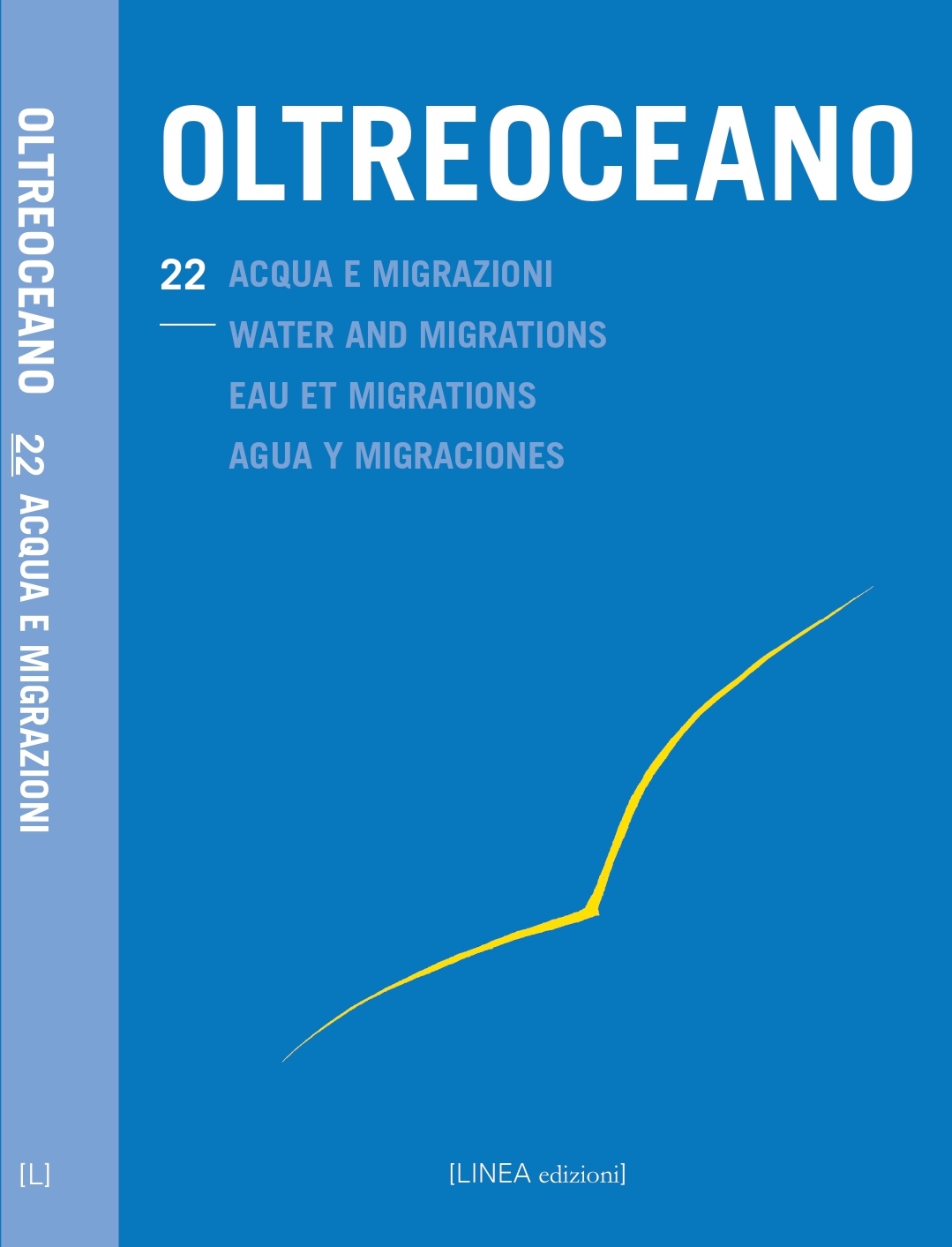
Acqua e migrazioni
N. 22 (2024)Questo numero esamina il significato polivalente dell’acqua e la sua importanza nei testi letterari. In particolare, l’oceano quale simbolo della totalità, dove ogni cosa è possibile, costituisce l’elemento comune alle abbondanti mitologie acquatiche che ricorrono al mare tenebroso, all’acqua primordiale, per far nascere il mondo oltre l’abisso della notte. Emerge il carattere ambivalente dell’oceano la cui funzione è quella di separare e di riunire, grazie a rotte che si delineano con vigore nel corso dei tempi, intensificando scambi commerciali, ambizioni territoriali, scoperte scientifiche e tecnologiche. Anche l’oceano Atlantico, considerato a lungo il terrore dei marinai, il Mare Esterno, il Mare delle Tenebre, l’Oceano Circondante, insuperabile prima delle tre caravelle salpate nel fatidico e rivoluzionario 1492, si offre a numerosi viaggi di collegamento tra Africa, Europa e Americhe. Non ultimi quelli che, a iniziare dalla seconda metà dell’Ottocento, vedono migliaia di italiani lasciare la terra natale per una nuova patria, ricca di promesse, ma con altrettanti ostacoli da superare. Declinate, dunque, all’interno di continenti diversi, e attraverso lingue differenti ‒ francese, inglese e spagnolo ‒, le indagini approfondiscono i molteplici significati assegnati all’acqua, esprimendo uguali concetti sia pure modellati dal territorio di appartenenza. Non può essere diversamente in quanto l’acqua, oltre ad essere motivo di perpetuo divenire, è elemento imprescindibile all’esistenza della natura e degli uomini che con essa hanno instaurato un rapporto conflittuale e al tempo stesso appagante.
-
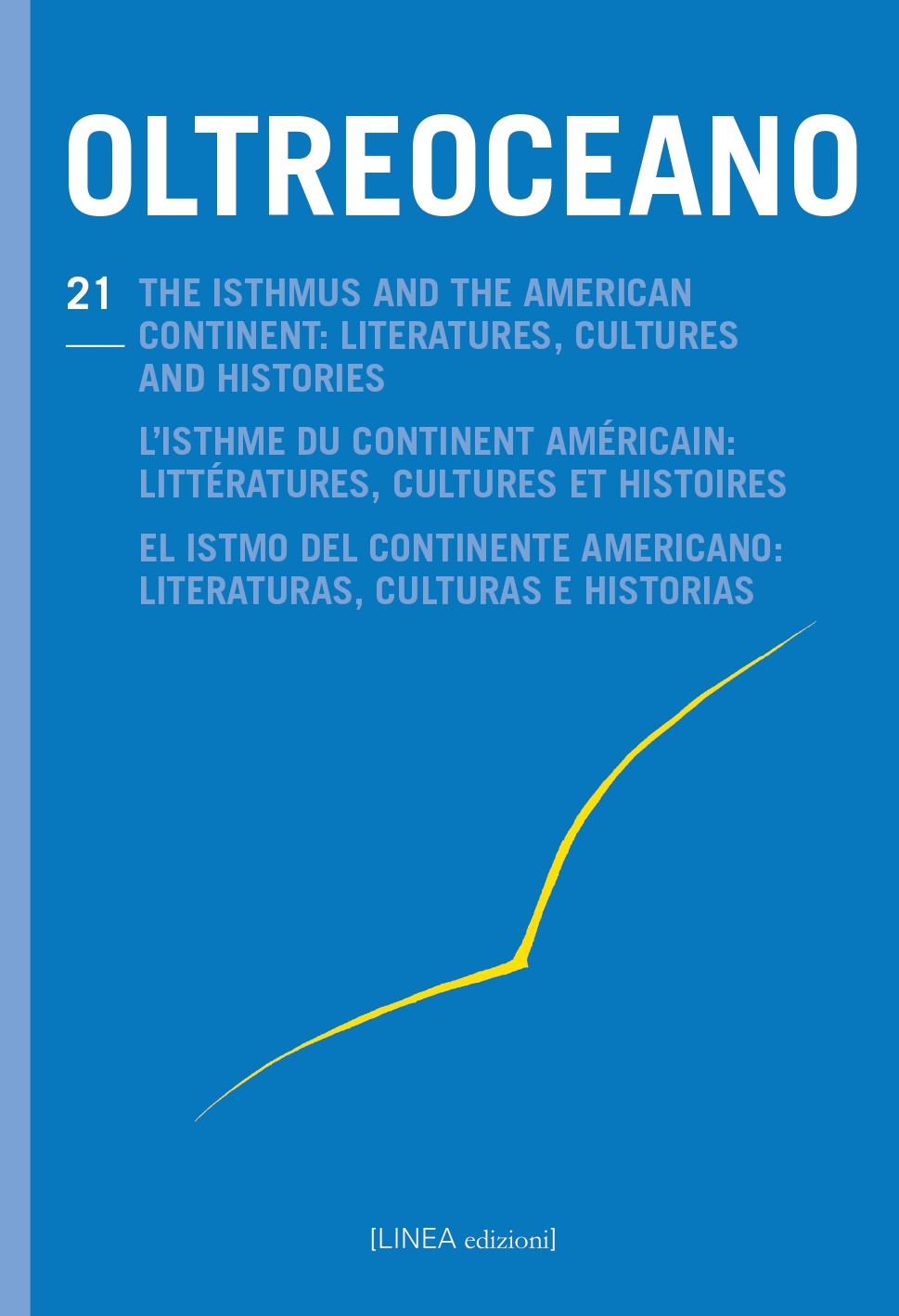
The Isthmus and the American Continent: Literatures, Cultures and Histories
N. 21 (2023)Il presente studio si propone di analizzare la funzione di contatto/ponte tra le realtà anglofone, francofone, latinoamericane, esercitata dalla zona istmica e, per estensione, da tutti i territori centroamericani, isole comprese. Nell'acquisizione estetica della natura, nel dialogo aperto con l'individuo e con la società, la letteratura diventa un punto nodale per penetrare nel mondo esterno e nel microcosmo interno e per indicare nel viaggio all'interno dello spazio fisico una necessità per tutti coloro che intendono la scrittura come missione della conoscenza. Il contatto tra culture mette in gioco qualsiasi base identitaria e stabilisce nuovi punti di riferimento, trasformando la cultura in ricchezza e coscienza, anche individuale. Pertanto, partendo dal contesto, è interessante vedere se i testi letterari inglesi, francesi e spagnoli dell'area affermano gli impulsi nella direzione di una globalizzazione inarrestabile o se prevale la scelta di coltivare le proprie radici culturali, seppur modificate o "contaminate" all'interno di un territorio multiculturale.
-
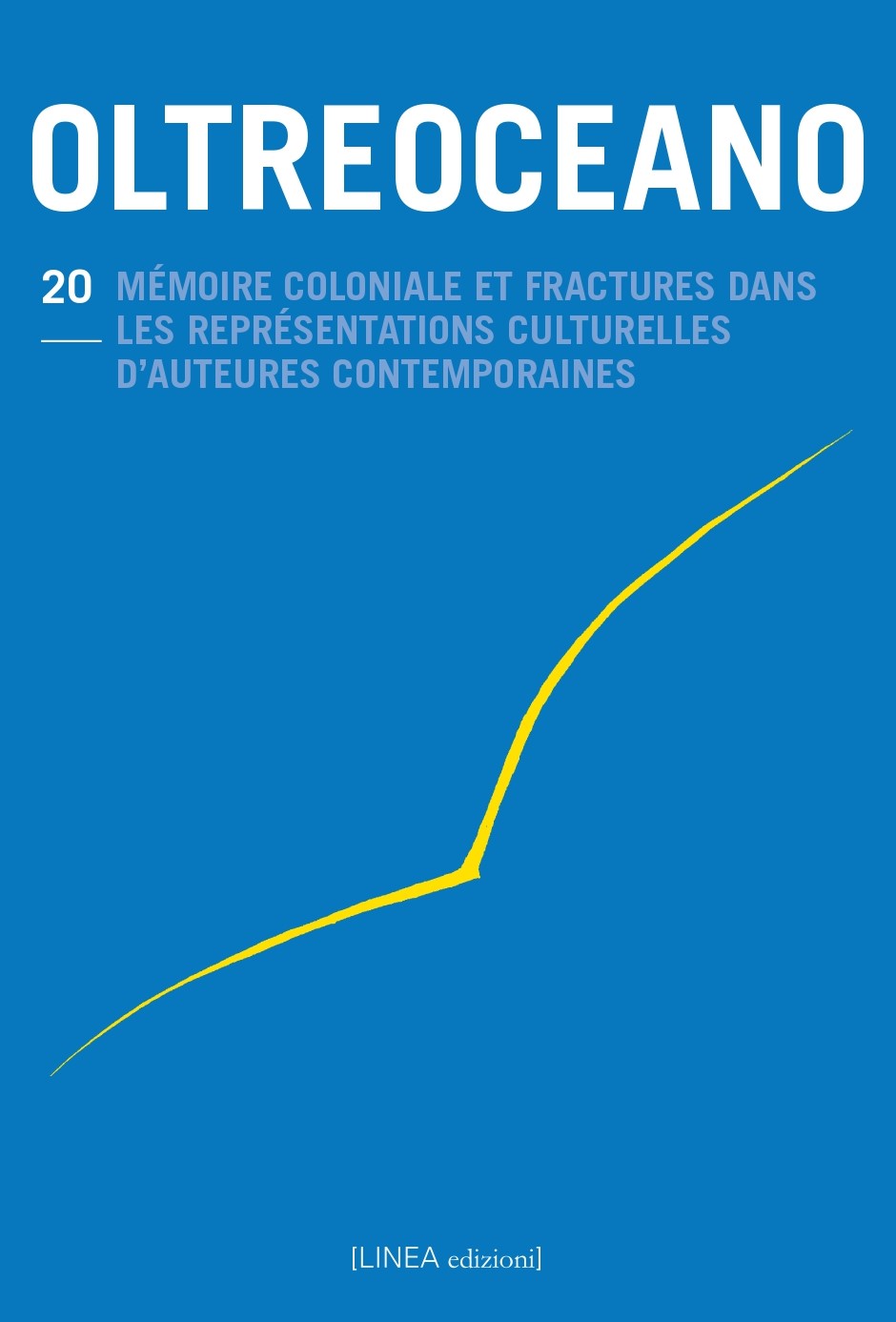
Mémoire coloniale et fractures dans les représentations culturelles d'auteures contemporaines
N. 20 (2022)Questo numero speciale della rivista si concentra sulle produzioni letterarie e artistiche femminili che recano tracce della memoria coloniale. Lo sguardo si allarga a tutti i continenti, America, Africa ed Asia, toccati dalla colonizzazione francese. Il mare, un tempo solcato da colonizzatori e mercanti di schiavi e oggi attraversato da migranti, si rivela uno spazio percorso da una "frontiera-mondo" molto densa che le scrittrici, le artiste, e intellettuali di molteplici origini le cui opere sono qui analizzate esplorano, usando il francese. Le prime due sezioni "Regards féminins et photographie" e "Le discours colonial chez les écrivaines contemporaines" raccolgono articoli che esaminano le opere letterarie di autrici in bilico tra due o più paesi: Marie Cardinal, Assja Djebar, Colette Fellous, Marie NDiaye, Fatou Diome, Léonora Miano, Lisette Lombé e Anna Moï; la sezione successiva è dedicata alle drammaturgie contemporanee di Maryse Condé, Gaël Octavia, Marie-Thérèse Picard e Alexandra Badea, oltre che al cinema di Claire Denis; i due contributi nell'ultima sezione presentano le biografie engagées di Gisèle Halimi ed Elisa Chimenti, intellettuali che hanno svolto un ruolo incisivo in Tunisia e Marocco. Gli studi raccolti in questo numero gettano uno sguardo inedito su una produzione ancora poco esplorata globalmente e invitano a rivisitare sotto una nuova luce la storia della cultura francese e francofona del XX e XXI secolo in una prospettiva di stretta connessione con il passato coloniale della Francia.
-
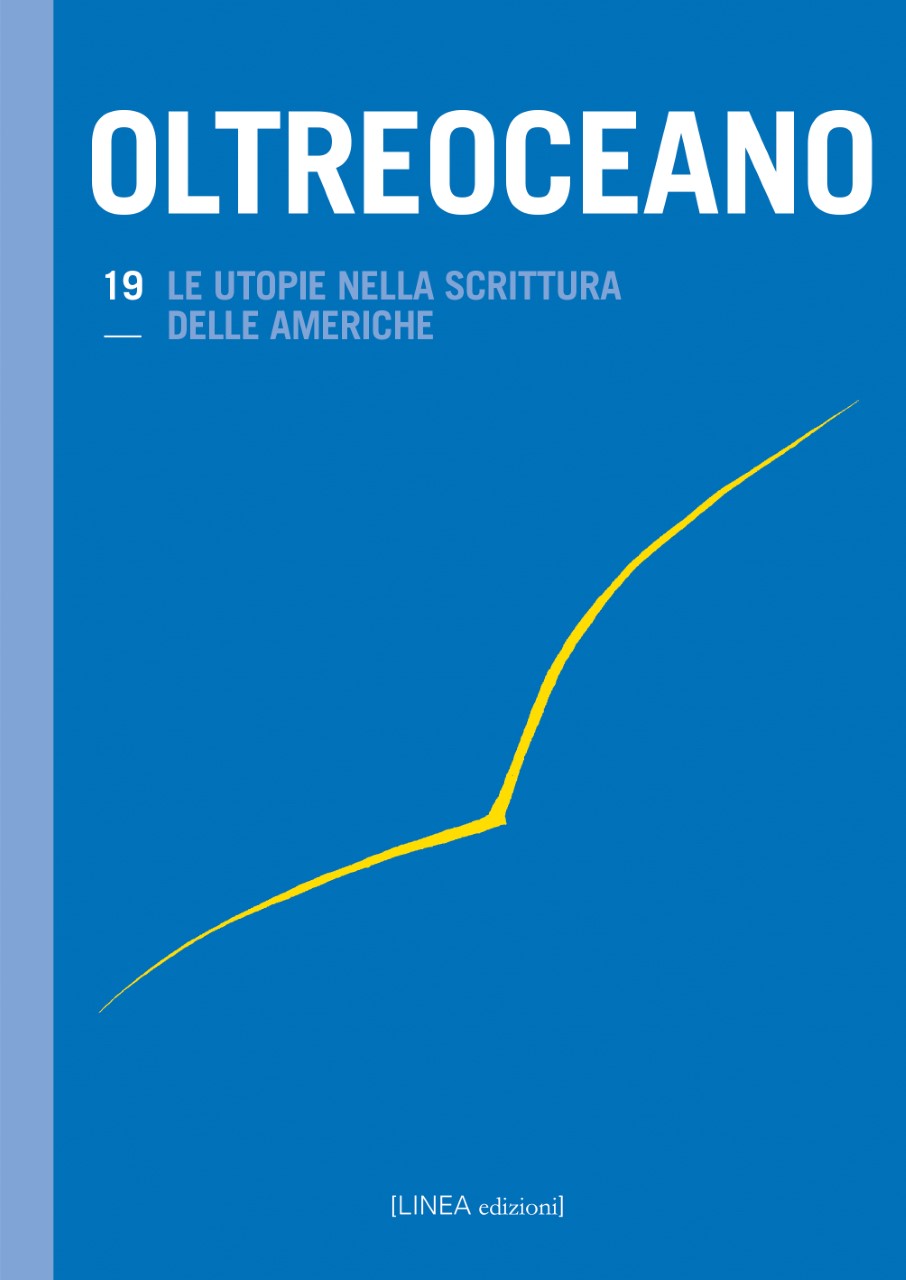
Le utopie nella scrittura delle Americhe
N. 19 (2022)Gli argomenti affrontati nel presente numero della rivista riguardano le utopie e l’orizzonte di attese e di speranze individuali o collettive nelle Americhe di lingua inglese, francese e spagnola. Attraverso una varietà di opere letterarie, che si basano su molteplici modelli di finzione, lo sguardo critico affonda nelle sfaccettature tecniche, ontologiche ed epistemiche per creare universi d’invenzione proiettati in un futuro auspicabile. Viene superato il concetto stesso della lotmaniana “semiosfera”, ovvero lo spazio semiotico circoscritto e mirato alla definizione dei territori culturali di una determinata società.
-
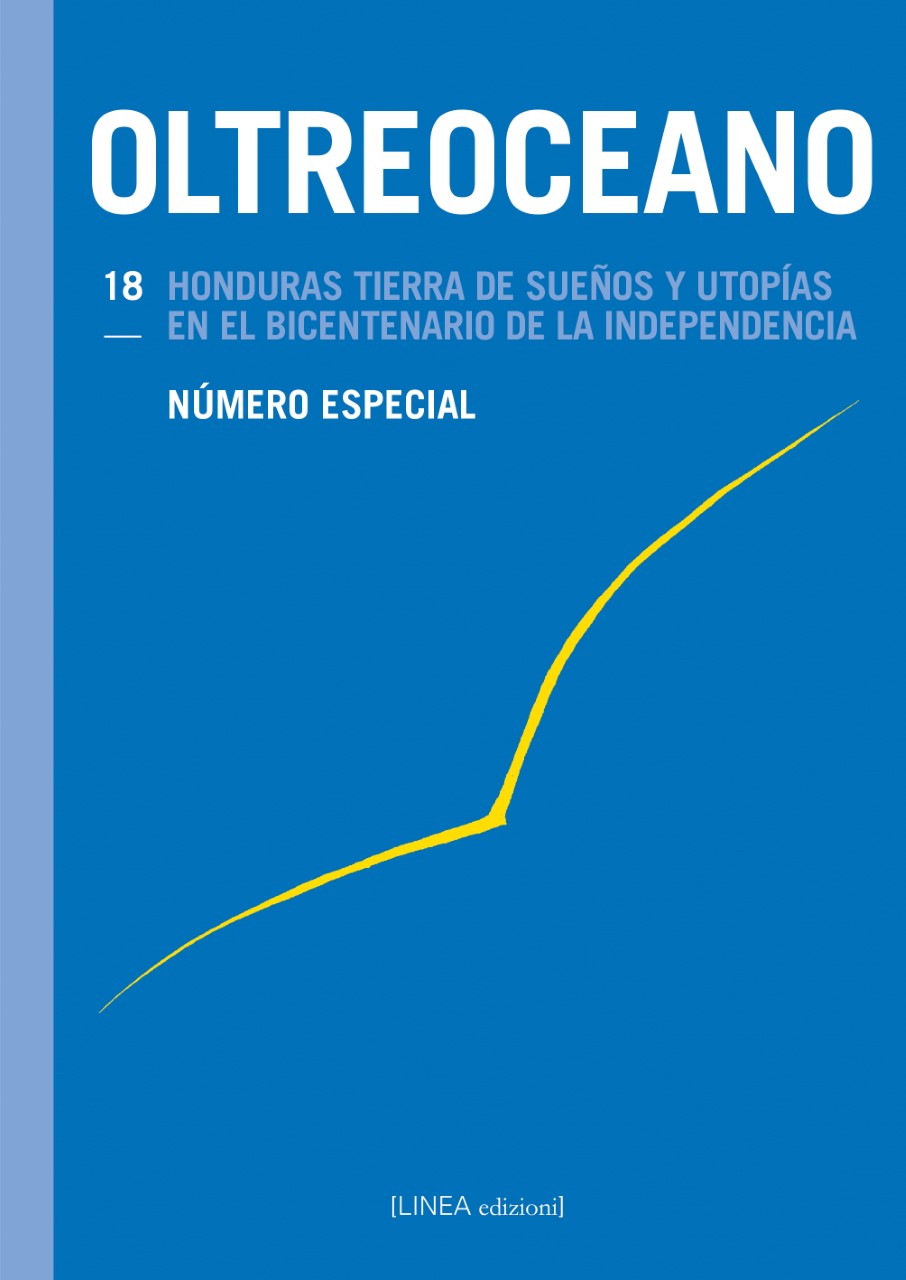
Honduras tierra de sueños y utopías
N. 18 (2021)Este número especial de la revista quiere rendir homenaje a una pequeña realidad geográfica ‒aunque sea el segundo país por extensión de la América istmica‒, marginal en el gran contexto internacional por haber tenido que enfrentarse a serios problemas, legado de la dominación española, la interferencia anglofrancesa y norteamericana. A pesar de esto, todo el territorio hondureño se ofrece como terreno fértil para la utopía, que posee la implícita creencia en la perfectibilidad y el progreso humano. Recoge estudios crítico-literarios que abordan tradiciones y valores culturales y analizan sobre todo los sueños, las utopías y las distopía que han contribuido a dar un impulso vital a los sistemas culturales obsoletos. Su importancia se da por sentada, ya que las utopías expresan el malestar de una sociedad abrumada por frustraciones individuales y generales, intentan superar el presente ampliando su mirada más allá de los estrechos límites del hoy preñado de sufrimiento. Precisamente por esta razón, florecen abundantemente en momentos de crisis, coagulando esperanzas, presentando una feliz vida futura y un orden ideal que perseguir con ímpetu entusiástico. Lo atestigua la directa intervención de poetas y narradores que animan una segunda sección particularmente interesante, adelantando interpretaciones personales de los paisajes y la individualidad.
Questo numero speciale della rivista vuole rendere omaggio a una piccola realtà geografica ‒ sebbene sia il secondo Paese per estensione dell’America istmica‒, marginale nel grande contesto internazionale per aver dovuto affrontare gravi problemi, retaggio della dominazione spagnola, dell’interferenza anglo-francese e americana. Nonostante ciò, l’intero territorio honduregno si offre come terreno fertile per l’utopia, in cui è implicita la credenza nella perfettibilità e nel progresso umano. Esso raccoglie studi critico-letterari relativi a tradizioni, a valori culturali, e analizzano sogni utopie e distopie che hanno contribuito a rivitalizzare sistemi culturali obsoleti. La loro importanza è scontata, poiché le utopie / distopie esprimono il disagio di una società sopraffatta da frustrazioni individuali e generali, cercano di superare il presente allargando lo sguardo oltre gli angusti limiti dell’oggi gravido di sofferenza. Proprio per questo esse fioriscono abbondantemente nei momenti di crisi, coagulando speranze, presentando una vita futura felice e un ordine ideale da perseguire con slancio entusiasta. Lo testimonia l’intervento diretto di poeti e narratori che animano una seconda sezione particolarmente interessante, sviluppando interpretazioni personali di paesaggi e di individualità.
-
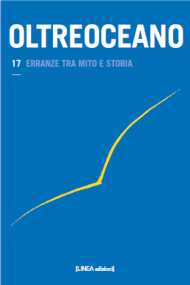
Erranze tra mito e storia
N. 17 (2021)Il presente numero della rivista, approfondisce i concetti di mito e di storia palesi nella scrittura di coloro che si spostano da un luogo all’altro, attraverso due modi di considerare la vita. Il primo, maggiormente oggettivo, si basa sull’osservazione dei fatti storico-sociali situati sullo sfondo dell’agire individuale e considerati esclusivamente in tale prospettiva. La difficoltà di trovare alloggio, posto di lavoro, integrazione si rivelano essere problemi sovente insormontabili, aggravati dall’incomunicabilità, dal peso insopportabile del silenzio, vissuto come assenza di parole dette e di parole ascoltate, di parole ignote e cariche di significato. A differenza degli emigranti economici, gli esuli politici basano la loro scrittura sulla relazione dialettica tra privato e pubblico, comunque subordinata alle particolarità dello sviluppo storico. Il secondo approccio, per essere soggettivo, occupa uno spazio maggiore nell’economia dei testi proprio perché lo scopo principale è quello di presentare l’immagine di sé attraverso le mille sfaccettature di comportamento e di pensiero. Inevitabile la contrapposizione tra vecchio e nuovo Mondo, tra due universi paralleli che vivono simultaneamente in una pluralità di presenti, di paesaggi, di situazioni e appaiono nella loro intrinseca verità e autenticità, con il carico di violenza, di sofferenza, di angoscia, di paura, ma anche d’amore e di speranza per la vita.
-
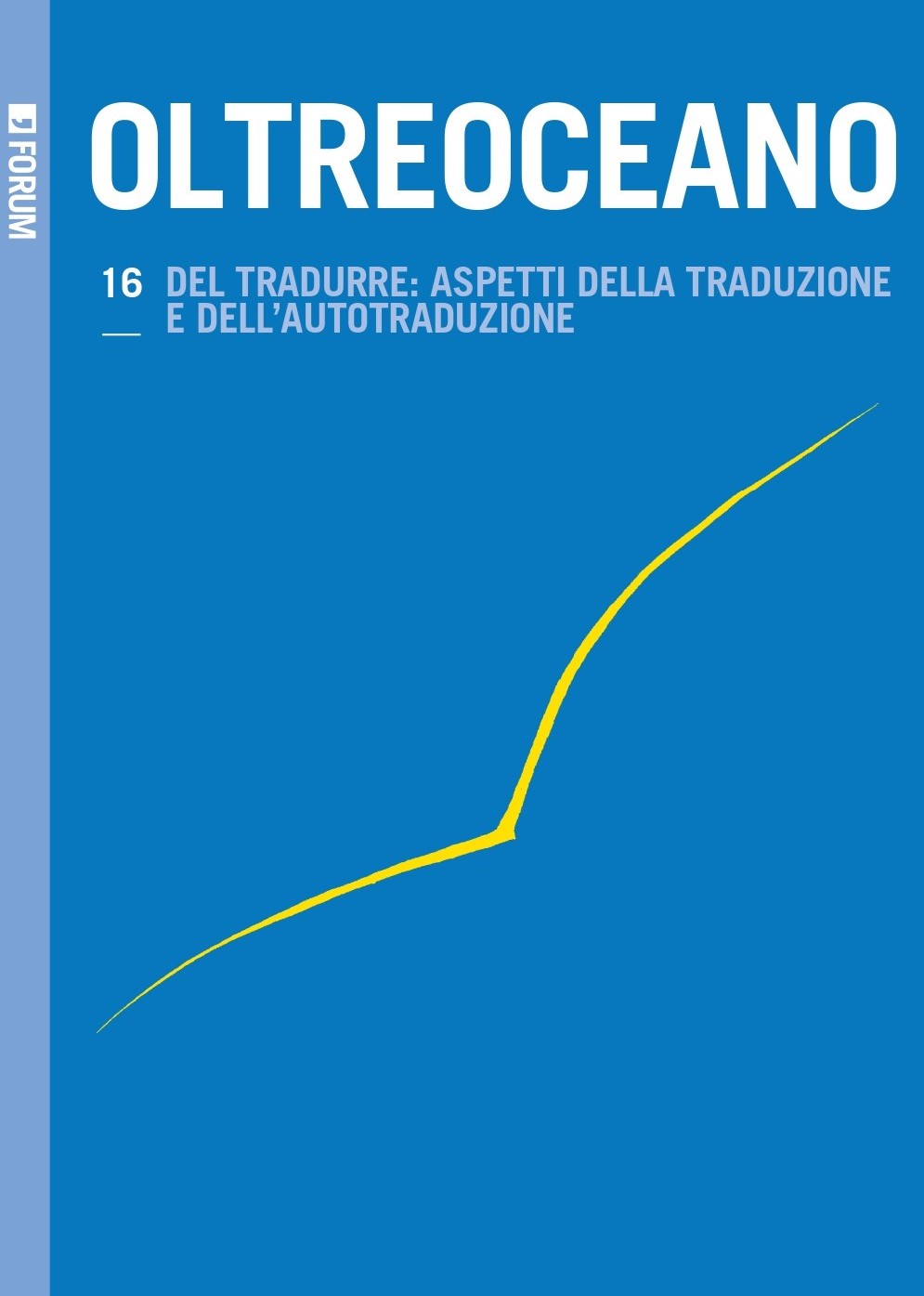
Del tradurre: aspetti della traduzione e dell'autotraduzione
N. 16 (2020)In questo numero si è cercato di dare risposte ad alcune domande che animano il dibattito sulle teorie della traduzione, formale, pragmatica o cronologica, ad iniziare dal modo in cui una sensibilità plurilingue interiorizza la traduzione, il passaggio concreto dall’una all’altra delle sue lingue madri. Per tanto, sono stati indagati i meccanismi del discorso rivolto a se stessi, del dialogo interiore tra sintassi e identità; le difficoltà che un traduttore incontra nell’atto del tradurre o dell’autotradursi; come può essere risolto nella traduzione il concetto di parola mancante, che caratterizza la letteratura moderna. Tutto ciò per fornire delle risposte all’eterno interrogativo della traduzione possibile, sino ad approdare al concetto di ri-scrittura in quanto il traduttore è libero di esprimere il senso dell’originale in qualunque stile e idioma scelto.
-
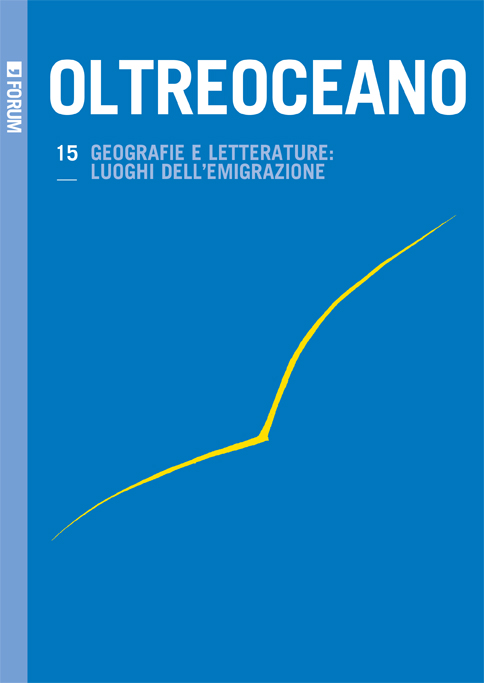
Geografie e letterature: luoghi dell'emigrazione
N. 15 (2019)Il presente numero della rivista, attraverso i luoghi e i testi letterari delle migrazioni, considera l’impatto dei migranti con la realtà geografica del Nord, del Centro e del Sudamerica. In quelle vaste lande sono confluiti viaggiatori curiosi alla scoperta della vera identità, ma anche tanti europei − italiani in primis – alla ricerca di un lavoro, popolazioni di nativi americani di varie etnie, che dalla campagna si sono riversate nelle città, dando vita a quel crogiolo multiculturale costituito dal Nuovo Mondo. Via via che i processi migratori si sono intensificati, si è assisito ad una graduale trasformazione rispetto alle iniziali descrizioni ambientali. In un primo momento, sono prevalse le emozioni, le aspirazioni più intime, i desideri nascosti, le astrazioni − funzionali allo schema della narrazione −, con il risultato di creare opere, imitazione di un’armonia difficilmente riscontrabile fuori di casa propria. Successivamente, si è assistito alla rivisitazione del passato, secondo un concetto di ‘liminarità’ relativo a individui, a situazioni, a superfici e a tempi; ciò ha permesso di riscrivere la storia di transizioni identitarie all’interno di realtà geografiche considerate sempre più proprie, mentre va definendosi il concetto di patria. L’obiettivo è quello di dimostrare in che modo la realtà geografica delle Americhe trovi un punto comune di contatto negli ampi spazi che la letteratura percorre, evidenziando occasioni di dialogo o di silenzio tra i testi stessi e le località su cui si misura l’esperienza diretta del migrante. Zone idonee a presentare non solo stratificazioni geologiche, ma anche sovrapposizioni di storie e di racconti, di cultura e di natura, di visione letteraria e di esperienze dirette − siano esse belle o brutte, traumatiche o esaltanti−, di passato e di presente, di vuoto e di pieno, di ancestrale e di nuovo.
-
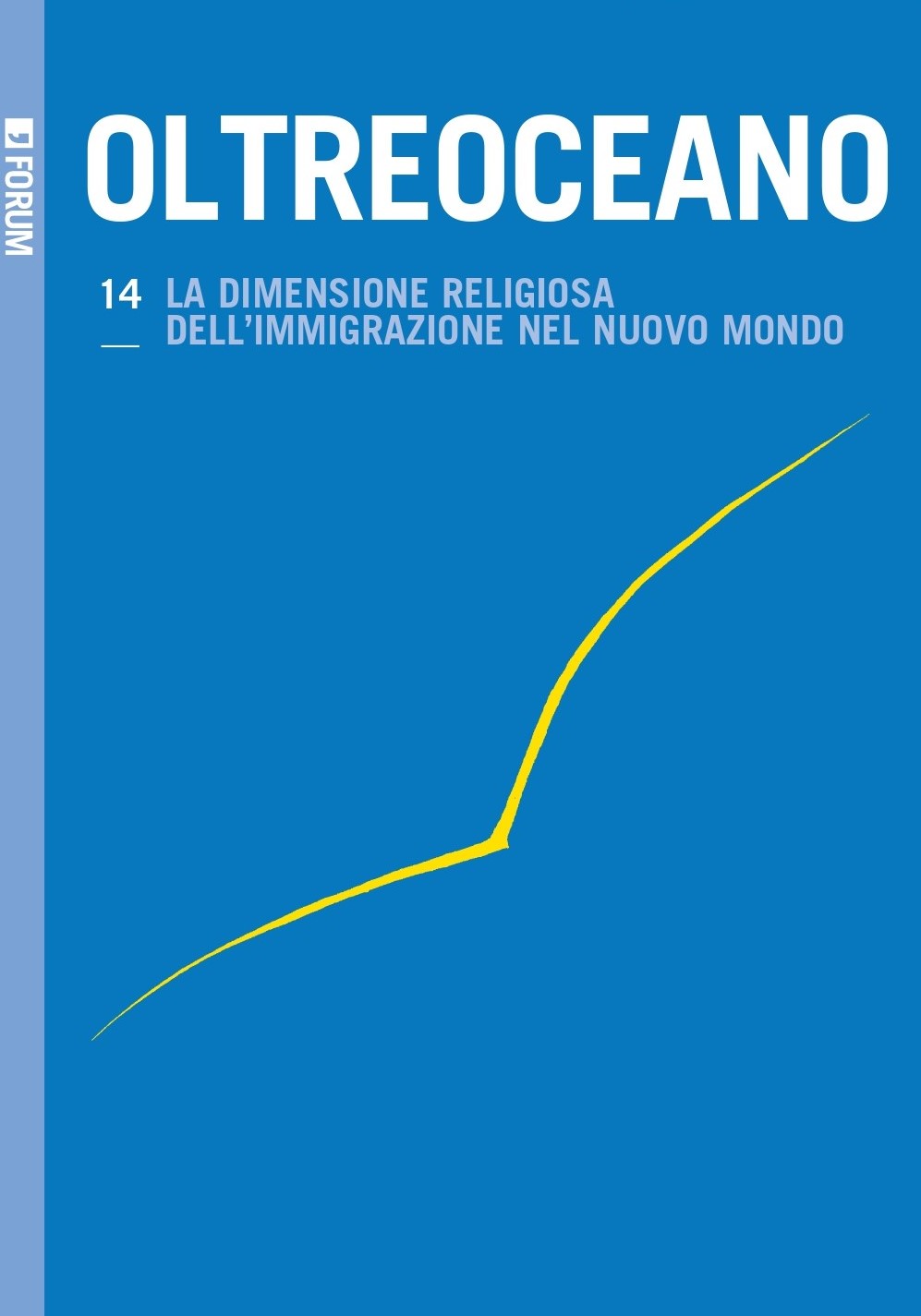
La dimensione religiosa dell'immigrazione nel Nuovo Mondo
N. 14 (2018)Il presente numero tende a evidenziare le modalità secondo cui la religione, tramite opere di evangelizzazione delle missioni e le conseguenti attività educative e culturali, possa essere considerata da prospettive differenti: impedimento o stimolo alla mobilità sociale; funzione di talismano, privo completamente di ogni forma etica, ma in grado di preservare dalle avversità; innesco per narrazioni relative ad aspetti culturali ed identitari della “Piccola Patria”; accettazione di nuove dottrine per (ri)definire l’idea di nazione e di cultura in comunità di migranti integrati. Le Americhe, dal Nord al Centro e al Sud, pur nella loro diversità geopolitica, trovano un punto di contatto proprio nella rifondazione della dimensione religiosa. Con il ‘trasferimento’, oltre i confini nazionali e culturali, di culti e pratiche religiose, si è forgiato un linguaggio dall’evidente traccia del substrato dell’esperienza migratoria, aperto ai processi di colonizzazione – ma anche al suo contrario −, a lotte e a tensioni etniche, a nazionalizzazioni. Religione utile a comprendere le dinamiche migratorie, che convergono nell’incrocio tra religiosità autoctona ed occidentale dando vita a un fecondo sincretismo culturale, non privo, tuttavia, di conflitti. Il titolo stesso è indicativo di un incipit che comporta un ventaglio di scelte, il più ampio possibile, in grado di esplorare una determinata topologia letteraria che, attraverso il rilevamento e la discussione dei topoi, coinvolge metaforicamente e metatestualmente anche l’aspetto tropico.
-
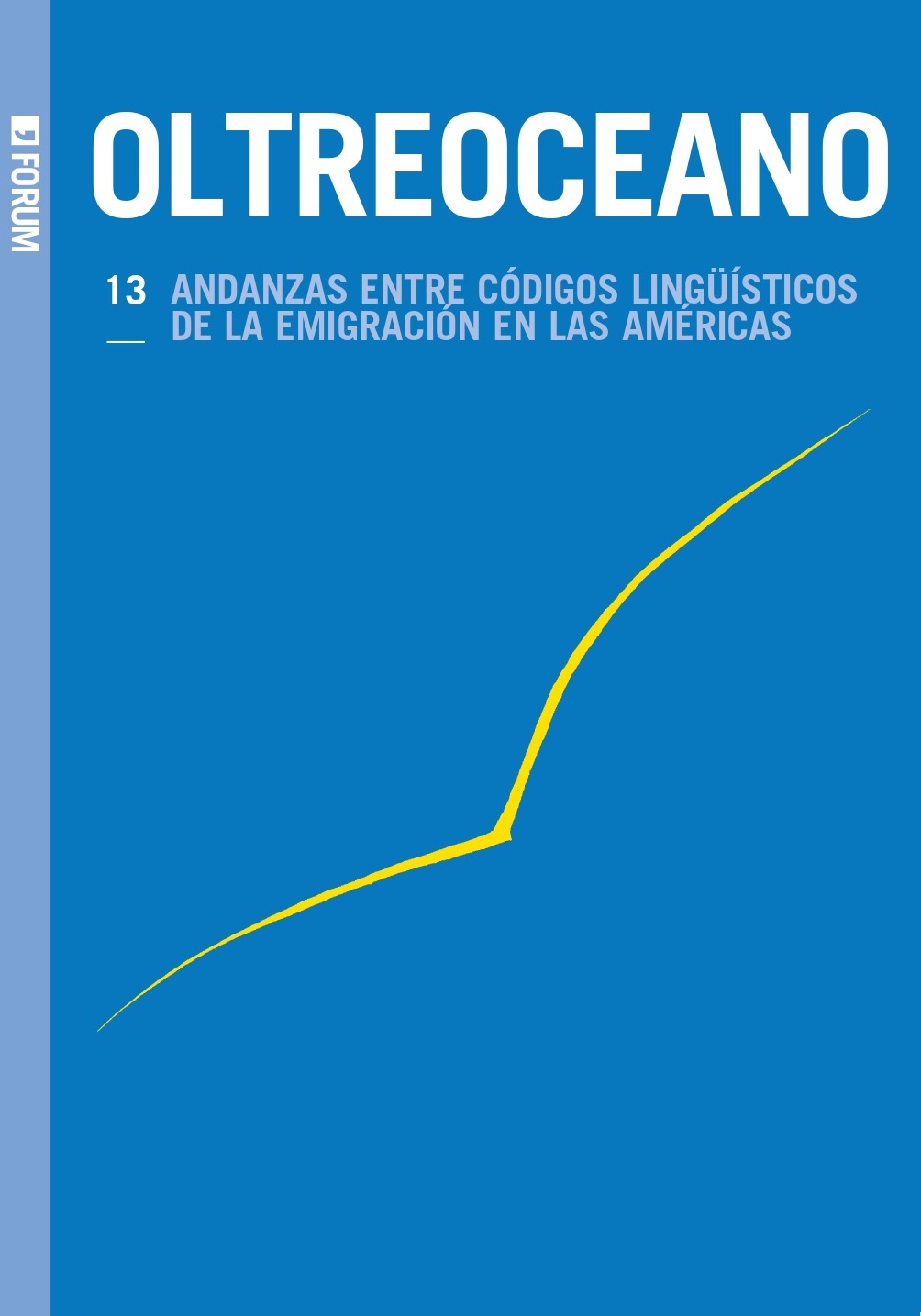
Andanzas entre códigos lingüísticos de la emigración en las Américas
N. 13 (2017)Con questo numero, la rivista si apre a una sperimentazione che, tuttavia, non modifica la sua struttura di base: la ricerca, sempre condotta con rigore scientifico e legata al vasto panorama della letteratura migranti, è limitata ad approfondire i codici linguistici dell’América di lingua spagnola (Nord, Centro e Sud) che, per prima, ha stabilito una linea diretta tra l’uno e gli altri. I nuovi arrivati, giunti in terra straniera con l’obiettivo di prenderne possesso, all’inizio con l’arroganza delle armi e, in seguito, senza difese, sono riusciti ad instaurare un dialogo con coloro che sono nati e cresciuti sul territorio. Tali codici non sono necessariamente verbali, poiché è noto che il linguaggio del corpo, la musica, la canzone sono in grado di comunicare con la stessa forza della parola come insegnano le antiche culture connesse alla terra. Oggi entrano in gioco espressioni artistiche, legate all’immagine e al linguaggio del corpo che, insieme alla letteratura, agiscono come fattori determinanti per rivitalizzare le configurazioni dell’immaginario collettivo e per risemantizzare il sistema epistemologico. Al di là delle parole, vi è il recupero di una antropologia del linguaggio che spazia nell’ambito della cultura e non solo in quello della linguistica. Oltre a rendere vivi località storiche e spazi fisici, esso evidenzia la verità del testo che dipende esclusivamente dalle capacità di persuasione del romanzo, compreso quello ‘migrante’, distruggendo la coscienza critica del lettore per fargli vivere la menzogna come verità e la verità come menzogna.
-
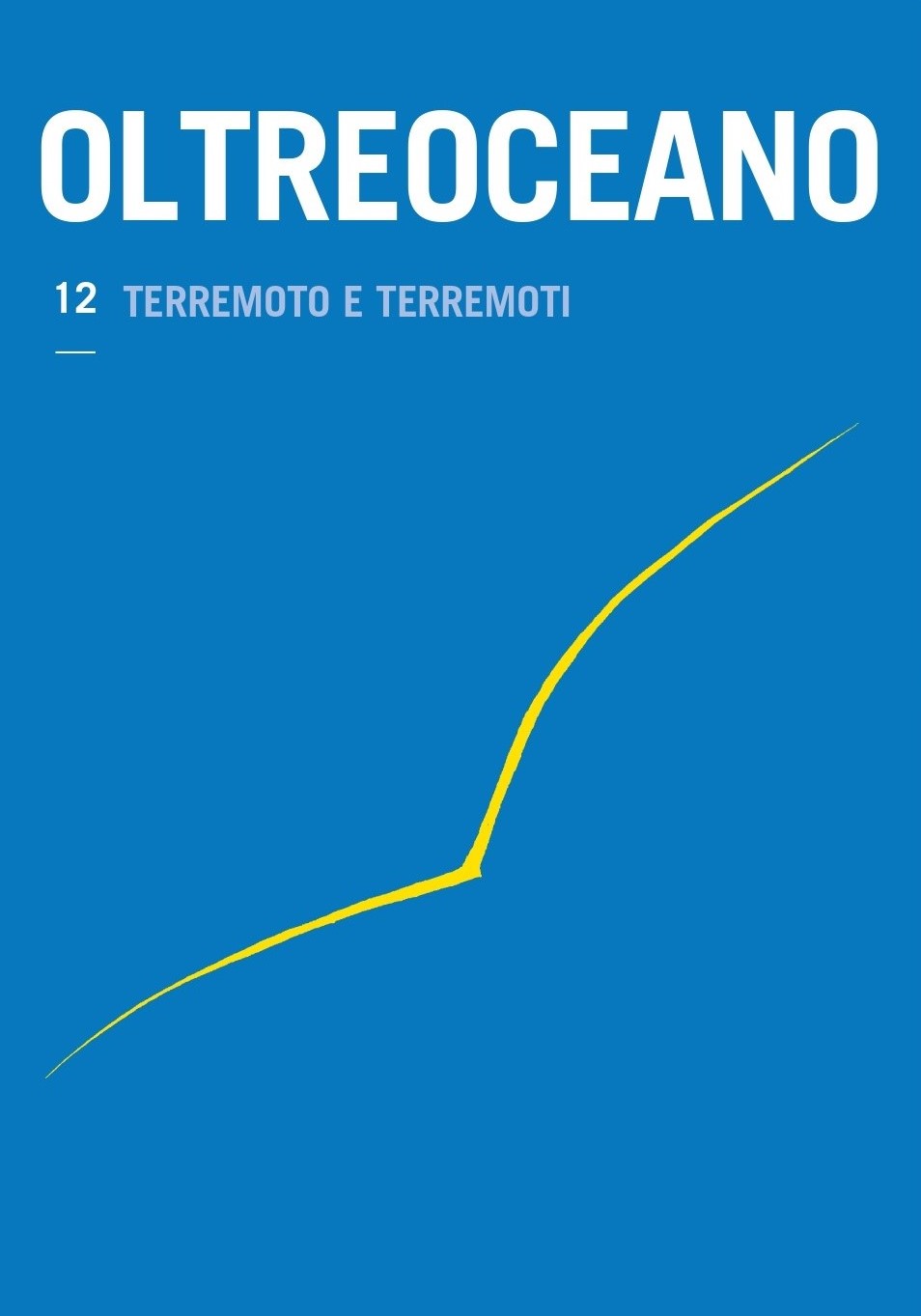
Terremoto e terremoti
N. 12 (2016)Il presente numero della rivista esce con un monografico speciale, perché vuole essere un riconoscimento internazionale del terribile terremoto che, nel lontano 6 maggio 1976, alle ore 21.06, con magnitudo 6.4, ha sconvolto il Friuli e l’intera regione Friuli-Venezia Giulia. Il quarantesimo anniversario dell’evento stimola, inoltre, una riflessione generale sulla letteratura relativa alle conseguenze drammatiche del dopo sisma, rispettivamente in Europa, in particolare in Friuli per essere stato un modello sia in termini di gestione dell’emergenza, sia nella ricostruzione post-sisma e in Romania che, insieme all’Italia e alla Grecia, rappresenta l’area geologicamente più instabile d’Europa, il paese a maggiore rischio sismico del Mediterraneo. In questa sezione s’inserisce anche uno studio ‘tecnico’, portato a termine dall’équipe di ricercatori afferenti all’Istituto per le Tecnologie della Costruzione del Consiglio Nazionale delle Ricerche, con sede a San Giuliano Milanese (MI). Seguono il nord America con gli Stati Uniti e il Canada − di lingua inglese e il Québec di lingua francese −, dove tanti emigrati friulani hanno voluto condividere sofferenze e fatiche con i loro corregionali fornendo ingenti aiuti umanitari ed economici. Un’ulteriore sezione è riservata all’America Latina, martoriata da terremoti e da catastrofi infinte. Infine, è stato assegnato uno spazio alle scritture creative (poesie e racconti) per testimoniare come, attraverso linguaggi diversi, è possibile comunicare medesimi sentimenti, paure e speranze. Nell’affrontare il lutto, il dolore, la letteratura trova significato stimolando la ricerca della verità e ricorrendo alla resilienza messa in atto dalle vittime. Proprio come alcuni materiali capaci di resistere agli urti senza spezzarsi, l’individuo è in grado di superare l’evento negativo e la discontinuità dei sistemi dinamici trasformando la crisi in opportunità e in speranza per il futuro.
-
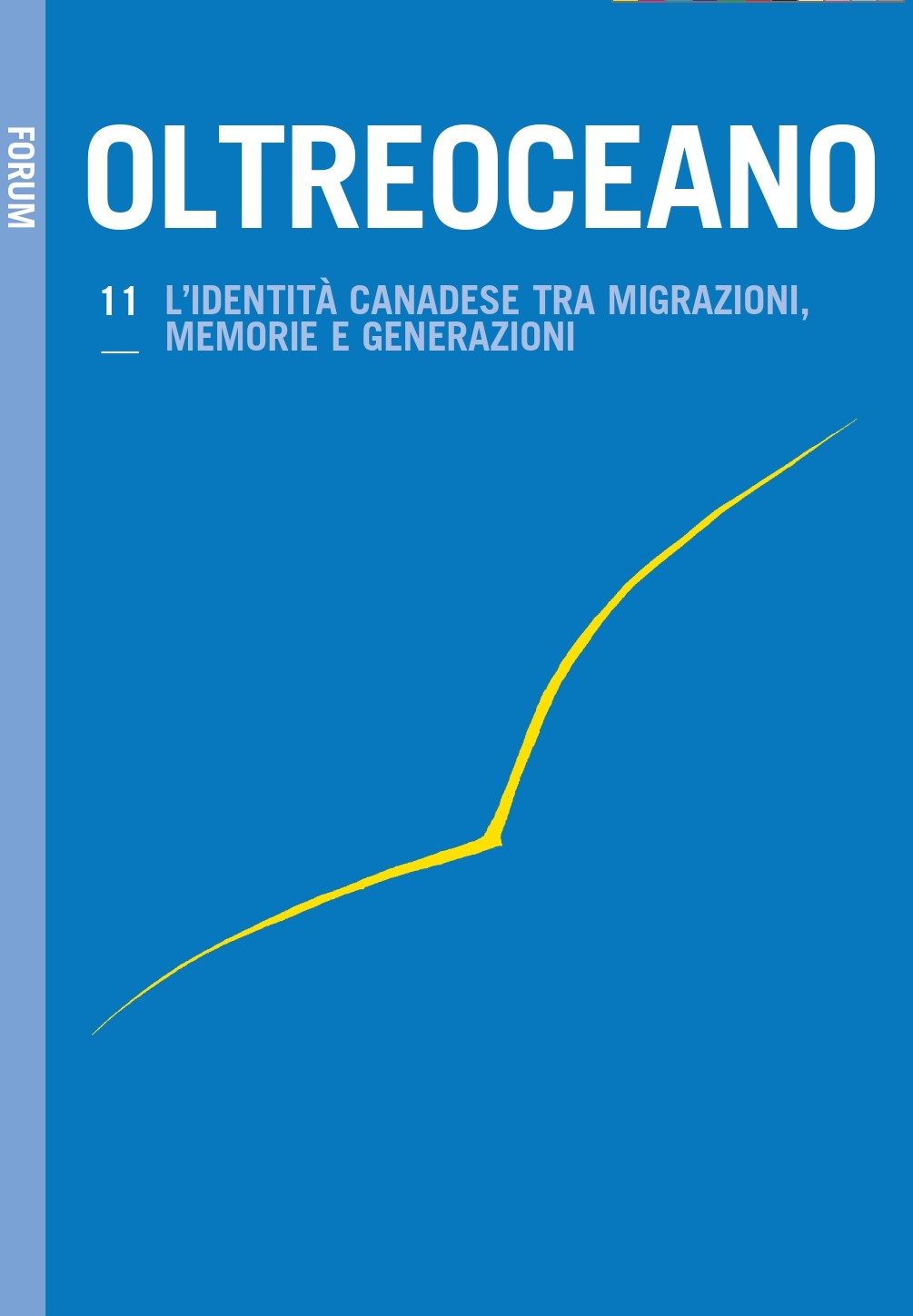
L'identità canadese tra migrazioni, memorie e generazioni
N. 11 (2016)Il presente numero della rivista s’incentra sul concetto d’identità canadese, tuttora in progress, data la complessa rete di elementi culturali che danno luogo a movimenti d’integrazione e di repulsione, di fusione e di giustapposizione, sempre parziali e negoziabili. In tal modo la letteratura svolge un ruolo di grande importanza per la società: attraverso un discorso simbolico, essa presenta soluzioni positive per tutti e a chiunque viene offerta la possibilità di partecipare all’affermazione dell’identità nazionale. Frutto della transnazionalità culturale o per meglio dire della transculturazione, lo scrittore / trice migrante indica alla società canadese una cultura alternativa, in grado di abbattere nazionalismi e di superare ristretti ambiti locali. Ben lo dimostrano gli studi qui raccolti relativi al Canada di lingua inglese e di lingua francese presentati durante il Convegno Narrating Canada: Generations, Memories, Identities / Raconter le Canada: générations, mémoires, identités (Venezia 11-12 novembre, 2015). Tali studi si soffermano sull’interdisciplinarietà fra i temi relativi ai rapporti intergenerazionali, a viaggi / migrazione, invecchiamento e memorie, qualità della vita e istituzioni, creatività così come essi hanno segnato e segnano l’affermazione dell’identità individuale e nazionale del Canada. Tra il multiculturalismo proposto dal Governo Federale e il meticciato avanzato dal Québec, s’inserisce un progetto ispano-canadese che poggia sulla costruzione dell’archetipo di un mondo la cui natura epistemologica consiste nel considerare, per analogia, modello ciò che si discosta dalla realtà. Un’ulteriore sezione è riservata all’emigrazione friulana attraverso l’analisi di alcune opere di scrittori friulani e giuliano-dalmati.
-
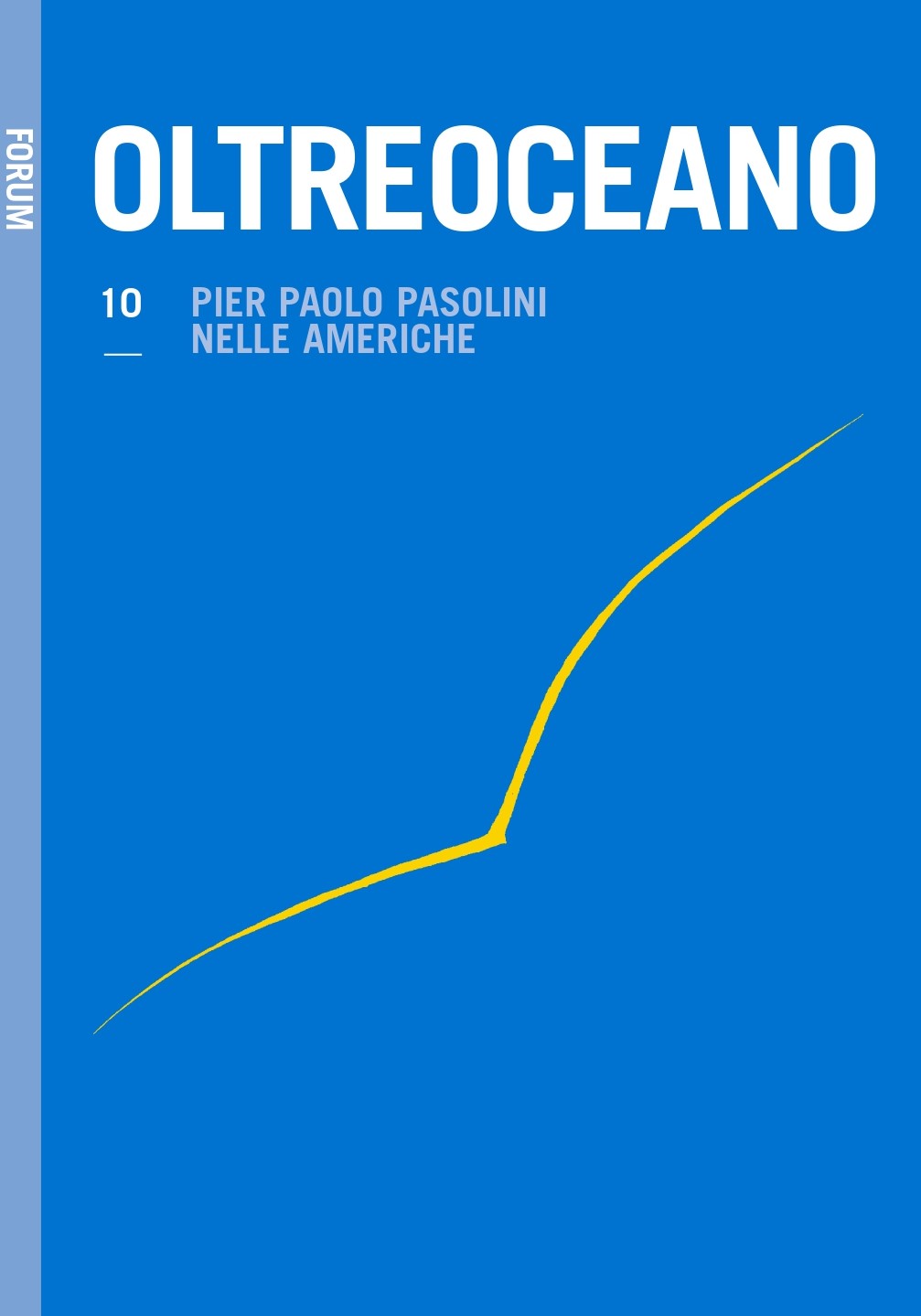
Pier Paolo Pasolini nelle Americhe
N. 10 (2015)In questo numero si evidenziano i legami tra il concetto di ‘letteratura migrante’ e la poetica pasoliniana in occasione del decimo anniversario della rivista Oltreoceano e del quarantesimo anno della tragica morte di Pier Paolo Pasolini. Sia il poeta che l’emigrante nel loro trans-ire attraverso località e linguaggi espressivi molteplici vanno alla ricerca del punto d’incontro tra tradizioni proprie e usanze altrui, nel tentativo di modellare costantemente l’identità personale, sensibile a nuove connessioni e ad ulteriori contatti. Gli studi, qui raccolti, forniscono un resoconto aggiornato della ricezione critica dell’opera pasoliniana nelle Americhe, nella Latina e in quella del Nord, compresi il Canada e la sua provincia francofona del Québec. Le numerose manifestazioni, le traduzioni, le rassegne cinematografiche, le opere che si ispirano alla produzione dell’autore o alla sua vita, i saggi in diverse lingue a lui dedicati, gli omaggi letterari recensiti nelle quattro bibliografie relative, in ordine geografico, Canada, Stati Uniti, Ispano-America e Brasile, testimoniano un interesse continuamente rinnovato da parte dell’intellighenzia d’oltreoceano per la figura e per l’opera dell’intellettuale di origine friulana, considerate in tutte le loro sfaccettature. Ad essi si aggiungono gli omaggi poetici di autori della diaspora italiana, i quali hanno contribuito ad allargare i confini del tema pubblicando in lingue disparate e in Paesi diversi. In un gioco di echi e di rinvii speculari via le Americhe, emergono i contorni di un pensiero e di una poetica pasoliniani che anticipano alcuni nodi centrali dell’attuale problematica postcoloniale, situandosi sullo sfondo di un’utopia transculturale più che mai attuale.
-
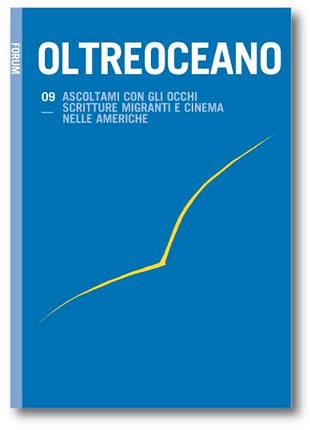
Ascoltami con gli occhi. Scritture migranti e cinema nelle Americhe
N. 9 (2015)Le riflessioni qui raccolte sono il frutto del Convegno Ascoltami con gli occhi. Scrittura migrante e cinema, incentrato sul linguaggio filmico, colto nel suo rapporto elettivo con la letteratura e focalizzato sul contesto delle Americhe. Se l’analisi semiotica e narratologica evidenzia la presenza del cinema nella produzione letteraria di scrittori migranti, lo studio di produzioni poligrafiche esalta l’attività dei registi migranti i quali hanno sperimentato entrambi i mezzi narrativi. Inoltre, la comparazione tra racconto filmico e testo letterario, l’esegesi diacronica di singole produzioni filmiche, di correnti e di movimenti che trovano affermazione in uno o più contesti spaziali, allargano l’indagine verso direzioni molteplici. Tutto ciò contribuisce a proporre una casistica, il più ampia possibile, di modelli utili a individuare affinità e divergenze tra le due arti. Scritture plurali che corrispondono, tuttavia, ad una medesima, imperiosa ed angosciosa necessità di ricerca identitaria da parte di emigrati, vecchi e nuovi, sia che si svolga in terra canadese, statunitense, messicana, guatemalteca, cubana o in qualsiasi altra regione del Centro o del Sud America, Argentina in particolare. Le prospettive avanzate si caratterizzano per la loro diversità focalizzandosi su aspetti compositi, a testimonianza del fatto che il campo di indagine offre spunti molteplici e di estremo interesse. Per raggiungere tale meta è stato necessario dialogare con il tempo sociale e politico, partendo proprio da reiterate coordinate tematiche – memoria, povertà, esclusione, marginalità –, attraverso proposte formali differenti, quali appunto la letteratura e il cinema – senza trascurare la musica altrettanto importante –, la cui comprensione dipana le tenebre su scenari di crisi individuali e collettive, o su dilemmi che interessano in toto le società globalizzate.
-
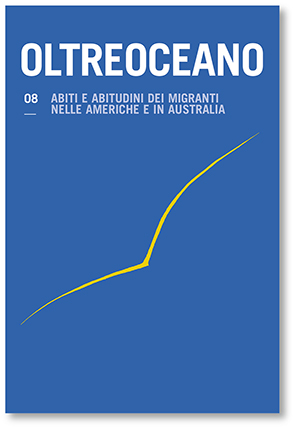
Abiti e abitudini dei migranti nelle Americhe e in Australia
N. 8 (2014)In questo numero della rivista, particolare attenzione è riservata al comportamento e alle forme del vestire, organizzati attraverso tematiche che veicolano valori extra letterari, d’ordine sociale ed etico, divenendo quasi l’emblema stesso della migrazione. Il vestito come espressione d’identità, individuale e collettiva, rivendicazione di origini etniche, ponte tra mondi diversi, fonte di consolazione o di disagio, orgoglio o rifiuto di un’appartenenza, permette di indossare identità vecchie e nuove per sentirsi parte integrante dell’attuale realtà. Permette, inoltre, di portare alla luce un ulteriore tassello per la definizione di letteratura migrante. Attraverso differenti testimonianze, gli studi entrano nella contaminazione di forme di scrittura e di problematiche che, intrecciate a quelle migratorie, estendono le indagini a un ampio spazio geografico –Americhe (Nord-Centro-Sud) e Australia– e a tempi diversi. Tale prospettiva dilata i problemi connessi al processo di formazione di suddetto genere. Tuttavia, all’interno del corpus letterario, nella dispersione tra enunciazione-descrizione, si crea una rete intertestuale in cui vengono messi in gioco rapporti molto complessi fra opere, linguaggi e scritture molteplici. Una sezione particolare è riservata alle creazioni artistiche dato l’interesse emerso dalla tavola rotonda –tenutasi nella prima giornata del convegno di Spazi e tempi dell’emigrazione (UD 15-17 ottobre 2013), incentrate sul migrare della parola, tra emozioni e inarrestabile ricerca del sé dove è implicito un cambiamento di significato, ossia il passaggio dal senso intellettuale a quello affettivo.
-
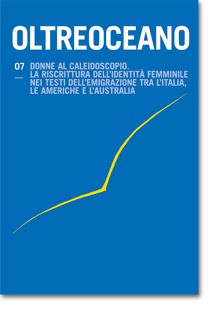
Donne al caleidoscopio. La riscrittura dell'identità femminile nei testi dell'emigrazione tra l'Italia, le Americhe e l'Australia
N. 7 (2013)Gli studi raccolti nel presente volume sono una preziosa testimonianza di ciò che s’intende per riscrittura dell’identità delle donne in accordo con la teoria postmoderna. Alcuni di essi sono stati presentati da studiosi delle università nazionali di: Padova, Roma “Tor Vergata”, Venezia “Ca’ Foscari”, Udine, ed internazionali di: Parigi-La Sorbonne, Rio Grande do Sul- Università Cattolica, Porto Alegre –Brasile–, all’interno dal congresso internazionale Donne al caleidoscopio. La riscrittura dell’identità femminile nei testi dell’emigrazione tra Italia, le Americhe e l’Australia (17-18 ottobre 2012), organizzato dal Centro Internazionale sulle letterature migranti “Oltreoceano-CILM”, in collaborazione con la cattedra di Lingue e letterature ispano-americane del dipartimento di Lingue e letterature straniere dell’università di Udine.
Tutti gli altri studi appartengono ad altrettanti esperti di letteratura migrante che allargano la prospettiva critica a diversi ambiti linguisti – francese, inglese, spagnolo, brasiliano –, fornendo un panorama interessante e variegato sulla frammentarietà della scrittura al femminile. Dai critici agli scrittori per un ulteriore cambio di prospettiva e per verificare in che modo viene presentato il personaggio femminile. Un’altra tessera si è unita al grande mosaico della letteratura migrante, ancora incompleto. -
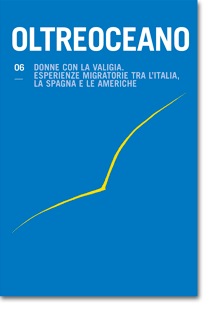
Donne con la valigia. Esperienze migratorie tra l'Italia, la Spagna e le Americhe
N. 6 (2012)In questo numero accanto alle relazioni presentate durante il congresso internazionale Donne con la valigia. Esperienze migratorie tra l’Italia, la Spagna e le Americhe –Udine 17-18 novembre 2011 ‒ si aggiungono indagini di carattere critico-letterario e d’invenzione poetica che forniscono una visione d’insieme sull’emigrazione nelle Americhe, in prospettiva femminile. La donna, protagonista indiscussa del flusso migratorio degli ultimi due decenni del XX secolo e del primo del XXI, deve affrontare, oltre agli scogli linguistici e alla sensazione di smarrimento implicita nelle nuove realtà, gli aspetti di sopraffazione ancor più dolorosi e complessi qualora si trovi in un contesto politico dittatoriale o di conflitti armati. La relazione dialettica tra privato e pubblico fa sì che le narrazioni trovino fertili suggestioni dalle dirette esperienze di vita che si offrono, pertanto, come metafora d’identità e di lotta culturale, permettendo l’accesso a modelli di esistenza differenti e a rinnovate appropriazioni delle strutture sociali. Tra le molteplici forme del migrare al femminile, alcune sono significative, altre curiose, altre drammatiche aprendo una gamma differenziata di situazioni che spingono a lasciare la terra d’origine, sia solo per un tempo più o meno limitato o in modo permanente. Accanto ad antiche problematiche – sradicamento, nostalgia, integrazione, assimilazione– ne affiorano altre proprie della globalizzazione e del suo opposto ‒ovvero la frammentazione dell’Io e del percorso vitale– e l’eccessiva localizzazione. Proprio per questi motivi le valigie si riempiono d’ indumenti personali, ma anche del libro di ricette, delle foto di famiglia, di memoria, di meccanismi di sradicamento e di nuovo radicamento nello spazio materiale, della volontà di dialogare e di trasmettere conoscenza antiche, parole dimenticate e ravvivate dalla necessità di ritrovare le origini, di creare un nuovo tessuto sociale in cui trovare quel sentimento di solidarietà, utilizzato sovente dalla donne come supporto all’inserimento, antidoto alla solitudine e alla nostalgia anche nell’esperienze più drammatiche. Una valigia, carica di sogni, di concrete aspirazioni per donne che manifestano una costruttiva curiosità verso sé stesse, verso gli altri e verso il mondo che le circonda.
-
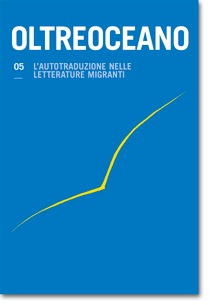
L'autotraduzione nelle letterature migranti
N. 5 (2011)L’attuale numero della rivistasi si orienta sull’autotraduzione. A metterla in atto sono proprio gli autori di origine italiana che hanno scelto di scrivere le loro opere nella lingua del paese che li ha accolti come migranti o che li ha visti nascere in seno a una famiglia di migranti, toccando con mano i mille problemi connessi a una scelta tanto radicale. Ma perché autotradursi? In alcuni casi ciò coincide con un ulteriore sfida che essi affrontano, misurandosi con le difficoltà di una lingua ormai lontana dall’udito, anche se ‘sentita’ nel cuore, perché sinonimo di affetti e di tradizioni. In altri casi, invece, l’autotraduzione risponde alla consapevole assunzione di una doppia identità culturale e alla necessità di conciliarla attraverso un processo di ricreazione e riscrittura, non solo della propria opera, ma anche di sé stessi e del proprio mondo. Di certo interesse sono le problematiche relative all’esistenza di un criterio che giustifichi o che quantomeno aiuti a infondere un senso, un ‘valore’ (sentimentale, identitario, stilistico, poetico), all’orientamento autotraduttivo. Tale criterio si dimostra tanto più significativo quanto più attinente al percorso esistenziale e alle scelte letterarie di ciascun autore. Oltre ad affrontare aspetti teorici e pratici dell’autotraduzione, i diversi saggi che coprono l’intero territorio americano, offrono spunti interessanti sull’ ‘arte’ del tradurre, salvaguardandola dall’inadeguatezza della ‘tecnica’ del transcodificare.
-
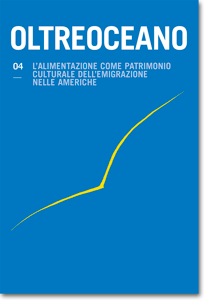
L'alimentazione come patrimonio culturale dell'emigrazione nelle Americhe
N. 4 (2010)Il quarto numero della rivista è dedicato al rapporto cibo ed emigrazione nelle Americhe che, a partire dalla seconda metà del XIX secolo, sono state travolte da una massa impressionante di emigranti alla ricerca di nuove motivazioni per le loro povere esistenze. L’insieme dei saggi ‒alcuni presentati all’interno dell’omonimo congresso internazionale tenutosi all’Università di Udine nei giorni 8-9 ottobre 2009 ‒ va a completare il quadro generale sulla letteratura migrante. Ben connotate nella capacità di collegare i molteplici spazi della realtà quotidiana secondo una prospettiva periferica, le tematiche analizzate riguardano aspetti della scienza dell’ alimentazione – attraverso la rivisitazione delle ricette tradizionali e l’ importanza del settore enologico ed enogastronomico in generale; – della letteratura in cui si evidenziano il valore simbolico del cibo per l’ integrazione sociale, per l’ identità nazionale, per il rapporto localismo-globalismo, dell’antropologia/sociologia che individuano nel cibo una valvola di sfogo per compensare l’insoddisfazione del vivere-al-di-fuori; degli aspetti linguistici, folcloristici ed etnografici legati all’alimentazione. La riflessione sul rapporto cibo-migrazioni offre, pertanto, un percorso di lettura originale proprio per la sua interdisciplinarietà e per la vastità dei territori analizzati che vanno all’Europa, alle Amiche, all’Australia.
-
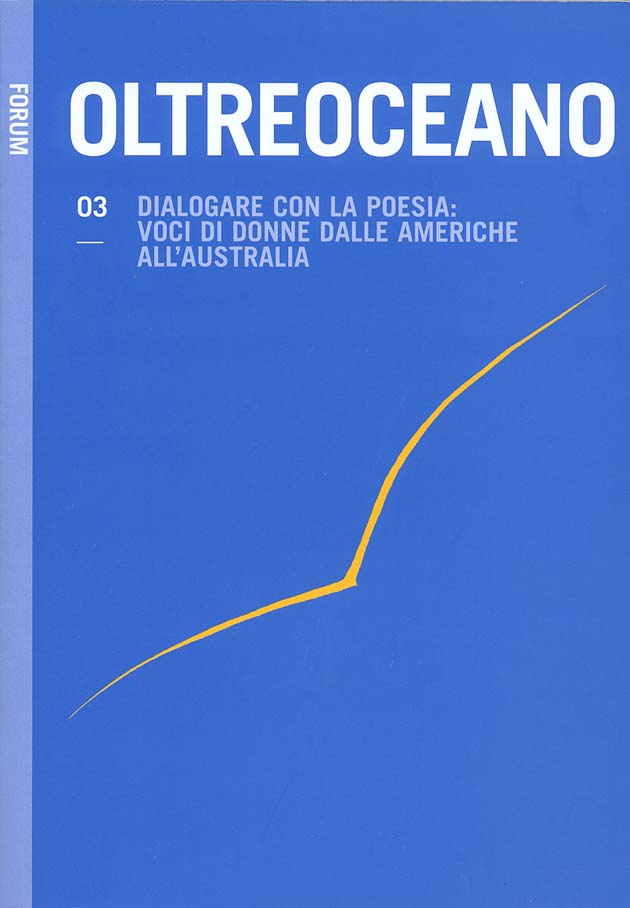
Dialogare con la poesia: voci di donne dalle Americhe all'Australia
N. 3 (2009)I diversi saggi qui raccolti e per lo più presentati in occasione dell’omonimo convegno internazionale tenutosi all’Università di Udine nei giorni 9-10 ottobre 2008, ruotano sulla propensione della donna verso la poesia che, inizialmente, insieme ai diari, presenta l’unica possibilità di dialogare con sé stessa e con il mondo. Da qui la necessità di creare il proprio luogo incantato, in cui leggende, elementi folclorici della terra natale, giochi infantili, racconti di fate, avvolti in atmosfere allucinate, permettono di superare inibizioni e autocensure – ancor più se la donna si trova in terra straniera –, di far affiorare emozioni celate nel subconscio e negli anfratti dell’irrazionalità. Poesia come stimolo e partecipazione emotiva, poesia come verità, poesia come espressione e dialogo universale sono costanti di gran parte delle creazioni femminili contemporanee e ancor più della poesia femminile dell’emigrazione i cui caratteri, data l’assiduità e l’omogeneità del tema trattato, assumono l’aspetto comune di genere. La necessità di comunicare il proprio sentire e di rendere universale il linguaggio scaturito dall’anima ha permesso di sperimentare forme estetiche diverse, espresse in versi colorati e sonori. Tutto ciò è visibile nella sezione intitolata “La voce dei poeti” dove è possibile cogliere anche le molteplici motivazioni che spingono a creare un’opera poetica, a trasformare in categorie estetiche drammatiche esperienze di vita – com’è appunto l’emigrazione –, a mutare la solitudine in conquista, condizione imprescindibile per la creatività e per l’individuazione di uno spazio interiore, dove immaginare, pensare e sentirsi vivi. Per rendere ancor più amplio il discorso, è stato riservato uno spazio ai poeti; ciò ha permesso di confrontare punti di vista difformi, in un dialogo costruttivo e di sicuro interesse in cui emergono nuclei tematici portanti di specifiche tradizioni locali e procedimenti di scrittura dove sensibilità poetica e linguaggio – friulano, italiano, francese, inglese e spagnolo – si integrano e si completano a vicenda, fornendo davvero una visione universale della poesia.
-
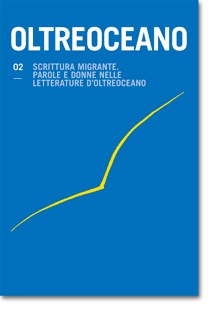
Scrittura migrante. Parole e donne nelle letterature d'oltreoceano
N. 2 (2008)Attraverso la miriade di sfaccettature emerse dalle espressioni letterarie di questa o quella nazione, sguardi indagatori si focalizzano sul concetto di donna e di scrittura, da sempre correlati. Sia come oggetto o come soggetto di narrazione, la donna, infatti, ricopre pagine intere di una pregnante letteratura che nel corso dei secoli ha contribuito alla sua evoluzione, individuale e collettiva. Ciò le ha permesso di acquisire consapevolezza del proprio essere ben oltre le mura di casa, dove troppo spesso si è appiattita in una sorta di invisibile presenza, per spingersi in un altrove lontano, vincendo le insidie della distanza e della lingua. Un migrare che offre l’opportunità di viaggiare non solo nello spazio, ma dentro l’io, per individuare un ordine interiore ed estenderlo al di fuori di sé, attraverso una visione rinnovata dal punto di vista esclusivamente femminile. Animata dalla convinzione di un progetto di futuro, la donna ha saputo imporsi con progressiva forza all’interno di strutture sociali e di istituzioni politiche, contribuendo in maniera decisiva alla formazione di nuove società basate su antiche tradizioni, mantenute vive proprio dalla sua capacità di raccontare, di conservare un bagaglio di conoscenze che fanno parte dell’essenza di un popolo. Molti dei contributi qui raccolti sono stati esposti nel convegno omonimo tenutosi nei giorni 18-19 ottobre 2007 all’Università di Udine; altri si aggiungono a completamento di un discorso ancora più articolato, ampliando la visione d’insieme su di un universo complesso come quello femminile che proprio nella diversità, vede possibile la sua realizzazione. Oltre agli interventi critici, vi è la diretta testimonianza di scrittrici, in grado di presentare rotte diverse di avvicinamento al problema.
-
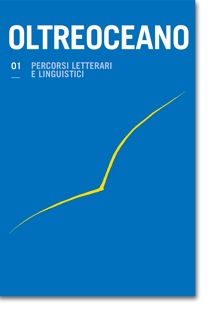
Percorsi letterari e linguistici
N. 1 (2007)Obiettivo dei collaboratori della rivista è individuare attraverso la letteratura ‒ in cui è implicito il duplice registro che modella la costruzione del discorso incentrato sulla dialettica permanente tra cultura e società ‒ il senso di appartenenza alla terra d’origine che, nella tragedia dell’emigrazione, si rinsalda e si rinvigorisce. Pertanto questo primo numero traccia i percorsi letterari e linguistici su cui migra l’intero sistema ideologico condensato in un ordine letterario simbolico particolarmente incisivo all’interno del tessuto sociale. Canada e la sua provincia francese Quebéc, Stati Uniti, Latino America ‒ Argentina e Brasile, in particolare‒, sono mete ambite dalla maggioranza di italiani che si sono spinti oltreoceano all’inseguimento di un sogno e di una speranza. Di contro la realtà dei nativi, individuati nell’intrinseco rapporto con la natura che placa violenze e dolori di conquista o che comunica antica sapienza e armonia del vivere. All’interno del testo prende consistenza l’immagine dinamica della cultura dei nuovi territori, in cui emergono problematiche legate alla dominazione e alla rivendicazione, al modernismo e al regionalismo, all’immaginario popolare e al cosmopolitismo, ma anche alla volontà di risolverle. Costante è la ricerca d’inserimento all’interno di una realtà che irradia elementi autoctoni di facile assimilazione ed instaura un rapporto reciproco fra culture, strettamente collegato alla dinamica dei sistemi culturali ed incentrato sulla crescita dialogica, alimentata dalla costante appropriazione e trasformazione dei messaggi esterni. Se l’emigrazione, identificata nel momento di rottura e di travaglio, corrisponde a precise prove iniziatiche necessarie ad intraprendere una nuova vita, l’acculturazione, all’interno di realtà geografiche considerate sempre più proprie, dà l’abbrivo alla formazione di una nuova coscienza nazionale. Per tale motivo la letteratura si connota di valenza etica ed estetica.

